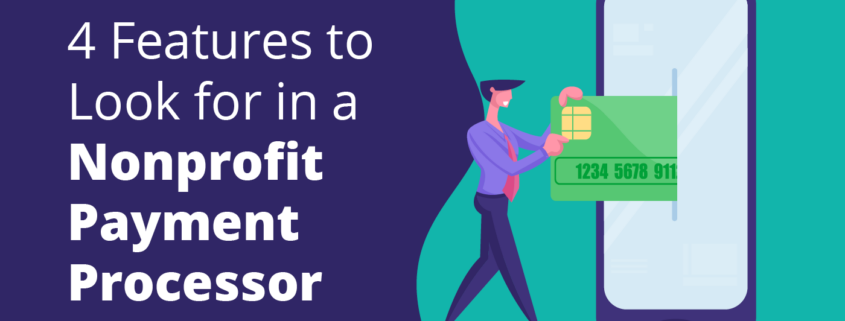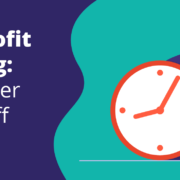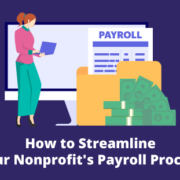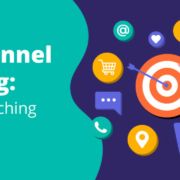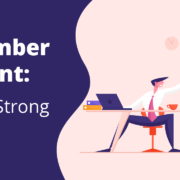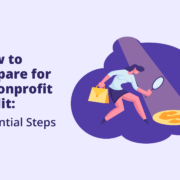4 Features to Look for in a Nonprofit Payment Processor
From planning a fundraiser to promoting and executing it, your nonprofit likely spends most of its time thinking of ways to boost its revenue. From text campaigns to festive fun runs, your goal is to collect donations that will power your nonprofit’s mission. But communicating the importance of your mission and finding enthusiastic donors is only half the job!
Consider what happens after you swipe that credit card. Between the swipe and the funds landing in your account, a lot has to happen on the backend to ensure payments are processed securely and quickly—and preferably at a low cost to your nonprofit.
Your choice of a payment processor significantly impacts your ability to gain donors’ trust and collect donations with ease. That’s why we’ve compiled four of the most important features to look for when researching payment processors for your nonprofit.
The choices, it can seem, are endless. There are nonprofit CRMs with built-in payment processors. There’s Stripe and iATS, Paypal, Fundly, and the list goes on. Think about your nonprofit to decide whether a CRM with a payment processor is the best choice, or if it’s easier for you to use a third-party system.
Regardless of which you choose, here are the four features you’ll want to be sure you pay close attention to as you shop around.
Security Certifications
Perhaps the most critical measurement you can take is how secure payments will be with any given provider. Fortunately for consumers and organizations, the Payment Card Industry has standardized security certification so you can tell, at a glance, how secure a payment processor is.
Payment processors should, at the very least, be PCI-compliant. If they have this designation, the payment processor adheres to PCI guidelines and will internally check their processes with a self-assessment. This compliance, achieved in about a month, means the payment processor has:
- Taken a self-assessment to ensure it’s following the guidelines
- Installed a firewall between their wireless network and the cardholder data
- Implemented a strong vulnerability management program
The next step up from PCI compliance is PCI certification. This is a much more stringent certification and one that involves more steps to remain compliant. There’s a rigorous process that includes regular audits by a third party to ensure the software and security measures are safe. This certification isn’t common among payment processors as it takes about six months to complete—and the processor remains under careful watch to ensure compliance is maintained.
If your payment processor is PCI-certified, it means that:
- A qualified security assessor (QSA) has inspected and approved the software and security measures in place.
- The QSA has researched how the software solution was developed.
- The QSA checked the training the software developers have received.
Moving on from PCI compliance, some payment processors are SOC 2 compliant. A platform that is SOC 2-certified or compliant adheres to security standards that protect all the donor data you collect. Everything from network firewalls to encryption is evaluated to ensure that information about your nonprofit’s donors can’t be compromised.
SOC-2 certification and compliance are voluntary and are based on Trust Services Criteria determined by the American Institute of CPAs. Compliant processors are adhering to strict regulations about how they manage donor data. If you can find a payment processor that is both PCI-certified and SOC 2-certified, you’re looking at a processor that is much more focused on the security and safety of your donor data.
A final piece of the security puzzle is fraud prevention. It’s a fear of many nonprofits because when donor data or dollars are compromised, the reputation of your nonprofit can take a hit.
To give your donors peace of mind and protect their data, look for a platform that is regularly audited and held to the highest security standards. Many nonprofit CRM payment processors will offer some sort of fraud protection to their clients, and it’s advisable to seek out any level of fraud protection to keep your donors safe.
User-Friendliness
Can a payment processor be user-friendly? Yes, if you find the right one!
Think about it like this: If a supporter donated just once at the end of each year, would they be familiar with the donation submission process? Or would they forget how to use the software after such a long time had lapsed and become frustrated with it?
Your payment processor should make it easy for donors to give, no matter how they choose to submit their donation. What makes it easy to give?
One-click giving, in which a donor enters a name and the system automatically populates the other fields, is a great way to offer donors a user-friendly experience. And having multiple options for donation types can help as well.
At a minimum, allow your donors to give via:
- Credit card
- ACH, or check/bank transfer
- PayPal
- Google Pay
- Apple Pay
Other considerations include the ability to accept in-kind donations or donated stock/securities. And for donors worldwide, choose a payment processor that accepts multi-currency transactions.
Availability of Support
When something in your payment processing software is confusing or just not working the way you expect it to, you’ll want to be able to pick up the phone or click a link and chat with someone.
How a payment processor views support tells you a lot about how the relationship is going to look, long-term. If they just want your signature on a contract, they might not be the best option. But if they offer a lot of support options: email, online chat, ticket system, and even the old-fashioned phone that actually gets answered, you might want to explore that relationship
Think of your payment platform as an investment in a partner who will support your fundraising ventures. This is especially true if you invest in an all-in-one solution that handles multiple fundraising tasks.
For example, if you are running a peer-to-peer campaign, you might appreciate a chat with someone who has seen dozens of nonprofit P2P events. If your nonprofit CRM is also a payment processor, they likely support their clients and offer a multitude of fundraising tools.
A tip is to look for a platform with a professional customer service team. Not only will you want the help to answer any questions you may have, but the right support team will:
- Offer training: The support team should do more than crisis control—look for a provider who will help you learn the platform.
- Answer at any time: Support should always be available and easy to reach.
- Provide thorough information: More than simply answering your questions, the right help team will give you all the context you need to make the most out of the software.
Be sure that you can depend on the provider’s customer service team whenever you need help!
Leveraging a Subscription Billing Model
If you look at gyms or streaming services or the little front-door boxes with all the ingredients for a delicious dinner, you will see evidence of our (increasingly expected) subscription economy.
And what does that mean for your nonprofit? Donors are used to this idea of monthly giving. When your billing software supports automatic monthly donations or sustainers, or even pledges, you’re ahead of the game.
Don’t start your search for a payment processor by thinking about the donation process—observe your fundraising goals in their entirety. Your nonprofit will want to grow donations and retain donors. How can your payment processor support that goal?
According to CharityEngine’s guide to sustained giving programs, “Your nonprofit needs billing software created to maximize the dollars donated to your nonprofit.” To encourage recurring donations, your payment processor should offer a subscription billing model that allows for automated payments or online bill payments.
Choosing the Right Payment Processor
Is there one payment processor that’s the best choice for every single nonprofit? No, but there is the best choice for your nonprofit. So once you’ve settled on the features that matter most, research your options and request demos from the providers that most impress you.
More than anything, look for a partner. Check off these four features, of course, because you can leverage them to maximize fundraising. But listen to your gut when you’re asking about support. Having a partner that cares about your success is a sure way to win at the fundraising game.
